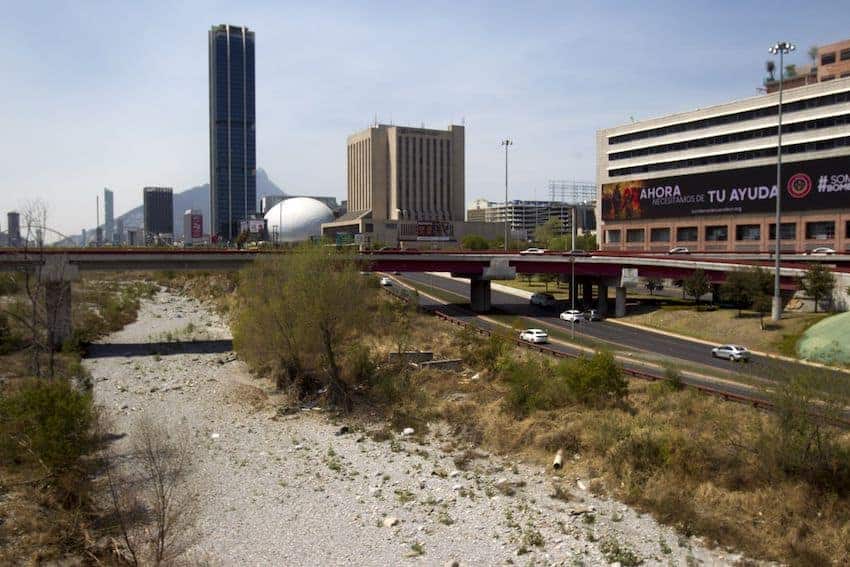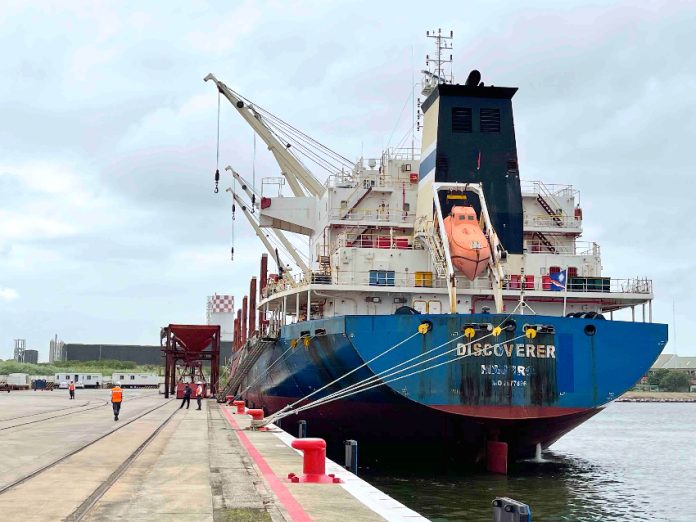Foreign companies relocating to Mexico will increasingly choose to establish their operations in the south of the country due to a lack of water in northern and central states, according to the head economist at brokerage firm Grupo Bursátil México.
At a press conference on Wednesday, Miriam Acuña noted that some companies, such as those that make semiconductors, use large quantities of water and therefore seek to operate in areas where the resource is readily available.

“Companies seeking to relocate to our country will look for the most appropriate region for their functions,” she said.
Water is much more abundant in southern and southeastern states such as Chiapas, Tabasco, Veracruz and Oaxaca than in central and northern states such as México state, Baja California and Nuevo León. Widespread drought in recent times has exacerbated water shortages in some parts of the country.
Acuña noted that the government is aiming to attract companies to Mexico’s south via the construction of infrastructure projects such as the Interoceanic Corridor of the Isthmus of Tehuantepec (CIIT), which includes a train line between Pacific and Gulf of Mexico ports and a chain of soon-to-be-developed industrial parks.
“As we know, there are Taiwanese semiconductor companies seeking to set up in our country, but these types of industries need large quantities of water, so both the government and the private sector are carrying out large infrastructure investments in the southern region, with the objective of connecting with the east coast of the United States,” she said.

A group of 20 Taiwanese semiconductor manufacturers visited Mexico last year and learned about government incentives on offer to companies that establish operations in the CIIT, which runs between Salina Cruz, Oaxaca, and Coatzacoalcos, Veracruz. They include a range of tax incentives that were announced last June.
Such incentives will offset the higher cost of getting goods to the United States from the south of the country. Companies operating in southern Mexico and seeking to get their products to the southeast and east of the United States could make use of the port at Veracruz, as U.S. brewer Constellation Brands plans to do, or that in Coatzacoalcos in the same state. The CIIT train line, which is set to connect with the Maya Train railroad in southeastern Mexico, will facilitate the movement of goods to port.
Constellation, which brews Corona and other Modelo beers, decided to build a brewery in Veracruz after its partially-built project in Baja California was canceled by the federal government precisely due to concerns over the amount of water it would use.
President Andrés Manuel López Obrador has encouraged foreign companies, including Tesla, to set up in southern Mexico due to the greater quantities of water there, but proximity to the United States, among other factors, led the Elon Musk-led electric vehicle manufacturer to ultimately choose Nuevo León for its new “gigafactory.”

The Isthmus of Tehuantepec trade corridor has, however, attracted significant interest from foreign companies, while Yucatán is one southeast state that has already benefited from nearshoring investment.
In addition to water, Acuña said that the government must be able to guarantee a reliable supply of electricity to companies seeking to relocate to Mexico. The director of the Federal Electricity Commission declared in January that the state-owned power utility is “ready” to provide the power required to meet nearshoring-related demand.
Acuña also noted that the availability of workers and the quality of infrastructure in general are considerations for foreign companies looking at Mexico.
To take full advantage of the nearshoring opportunity, Mexico needs to train more engineers and IT experts, the economist added.
Acuña said that by taking full advantage of the nearshoring opportunity, Mexico’s GDP could increase by as much as 45 basis points in coming years. Official data published on Thursday showed that the economy grew 3.2% last year. On Acuña’s forecast, annual growth could exceed 7% in coming years.
Carlos Slim, Mexico’s richest person, is similarly optimistic, telling this week’s Mexico Nearshoring Summit that annual growth of 6% is possible during the next 10 to 15 years.
He said that the development of the CIIT will allow Mexico to send more goods to the east of the United States, “where until now Mexico’s participation has been low.”
“We have great export potential,” he said.

Acuña compared the importance of the nearshoring opportunity to the entry into force of the North American Free Trade Agreement (NAFTA) in 1994 and the reforms enacted by the previous federal government, among which was one that opened up Mexico’s energy sector to private and foreign companies.
Trade between Mexico and the United States has increased significantly since NAFTA took effect, while numerous private and foreign companies have invested in Mexico’s energy sector over the past decade.
In the next decade, Acuña said, “Mexico and North America as a whole are on track to become the most competitive region in the planet.”
“Upon analyzing the natural competitors of our country, we find that we have advantages that range from [the availability of] labor and infrastructure to demographic and geographic aspects,” she added.
In 2023, Mexico became the world’s economy 12th largest economy, according to the International Monetary Fund, and was the world’s top exporter to the United States, dethroning China.
Foreign direct investment (FDI) increased last year to reach its highest level since 2013 (when the sale of Grupo Modelo significantly boosted the total), but none of Mexico’s water-rich but historically disadvantaged southern or southeastern states was among the top 10 recipients of such investment last year.
Will 2024 be the year when at least one of those states enters the top 10 for FDI, as many other entities continue to contend with a scarcity of water?
With reports from Milenio, Forbes México and El Financiero
